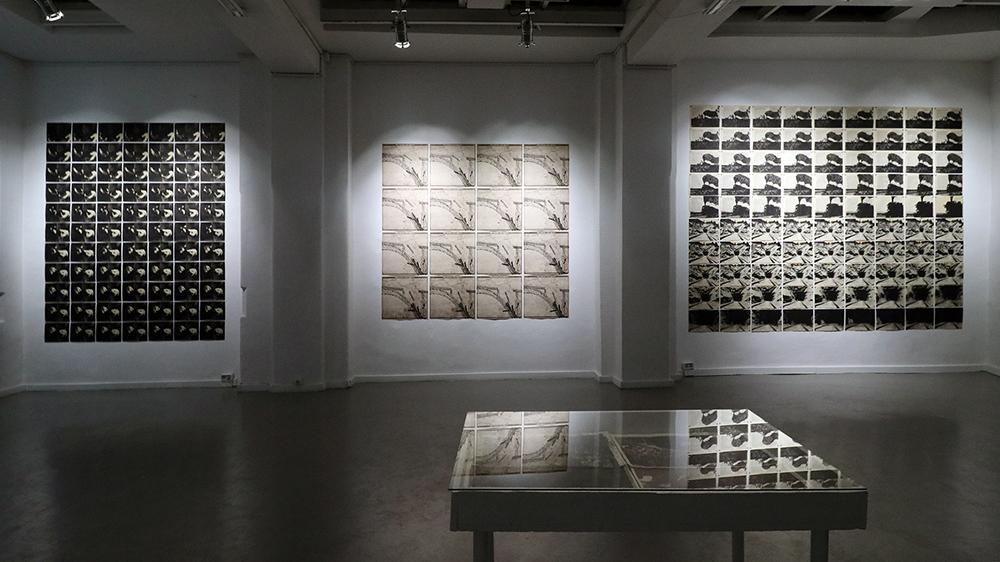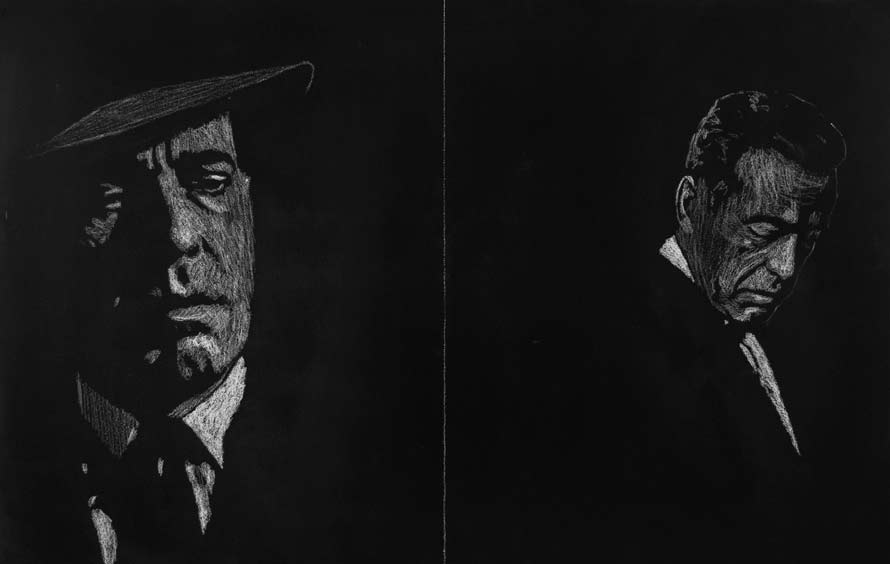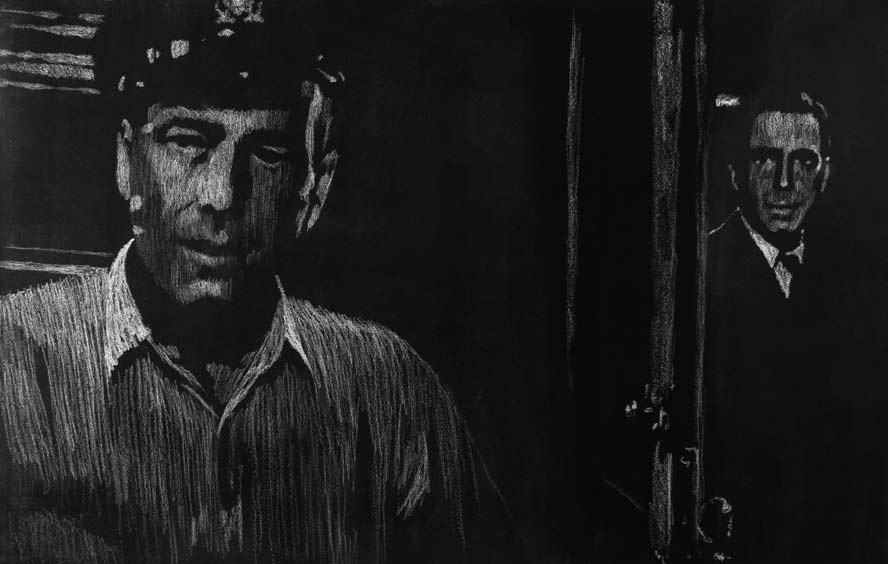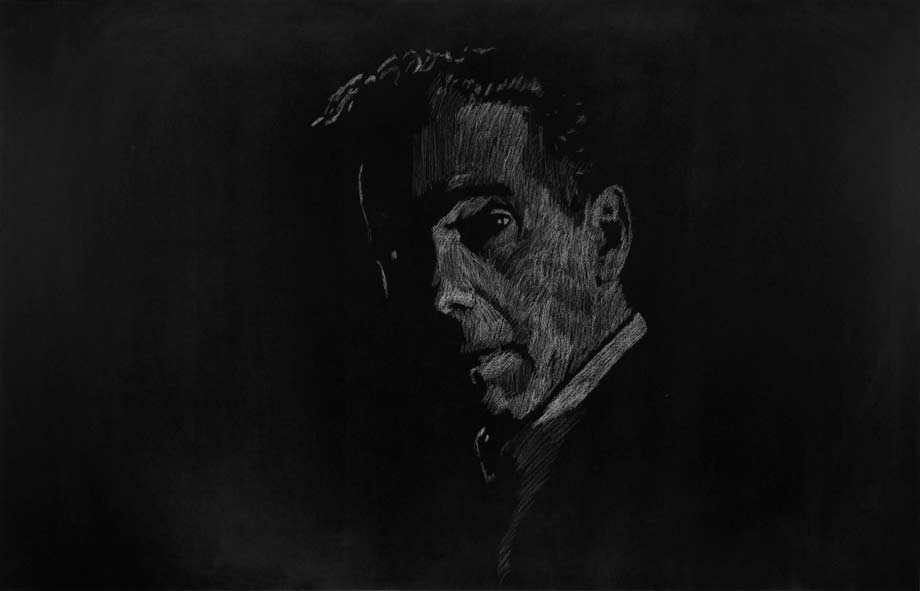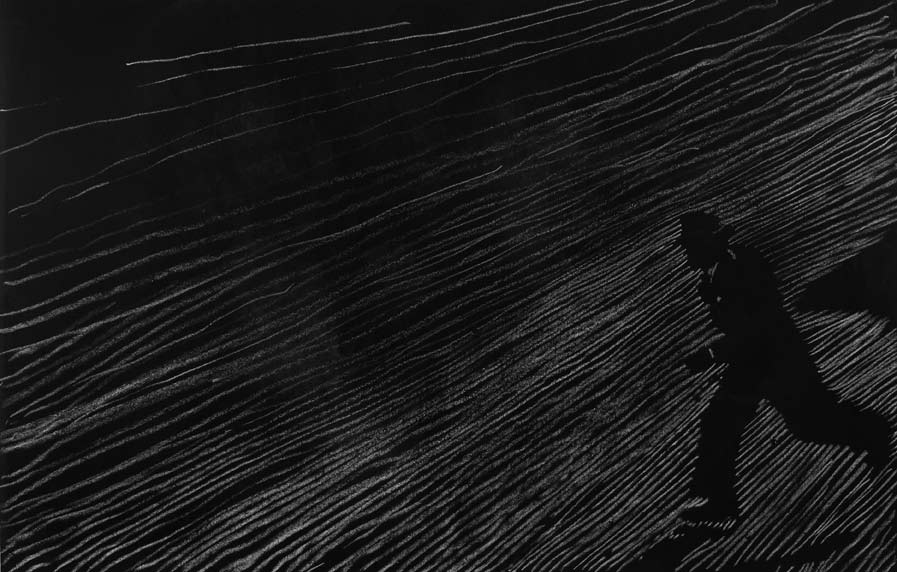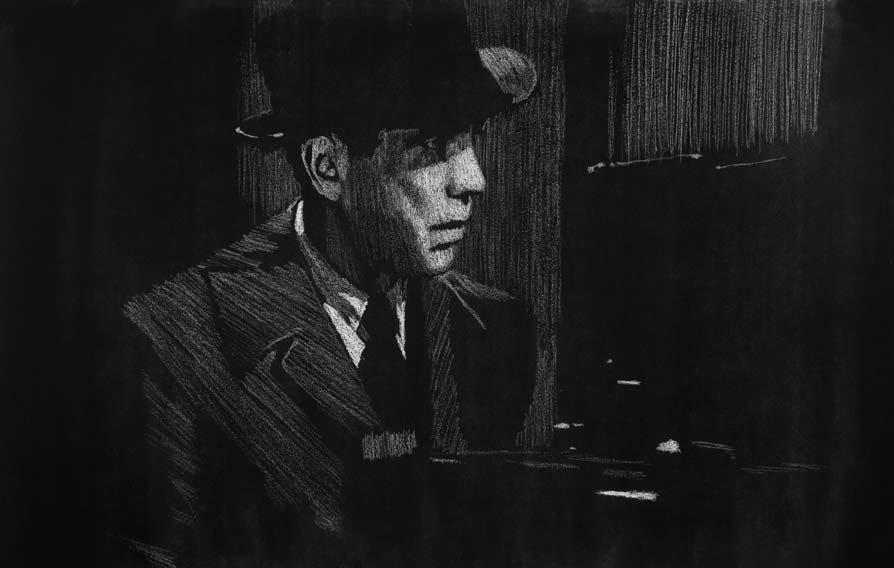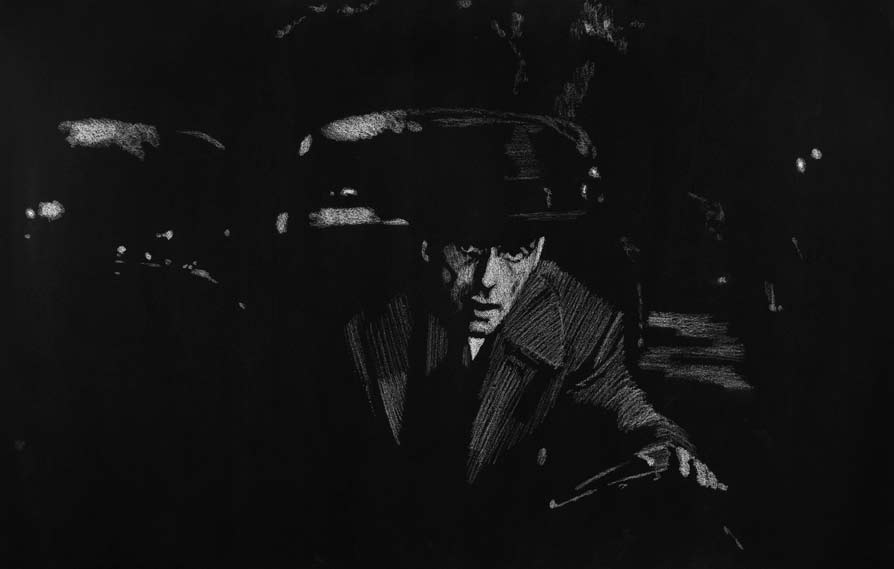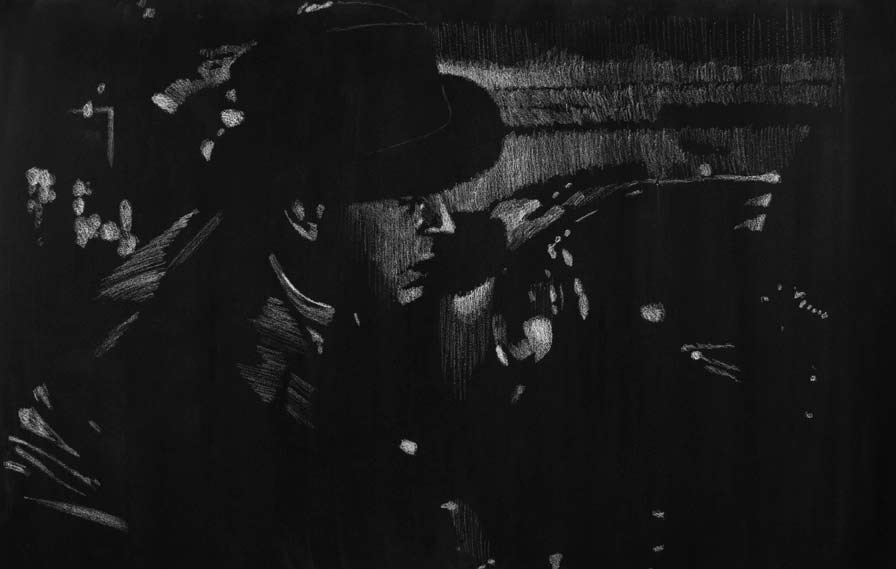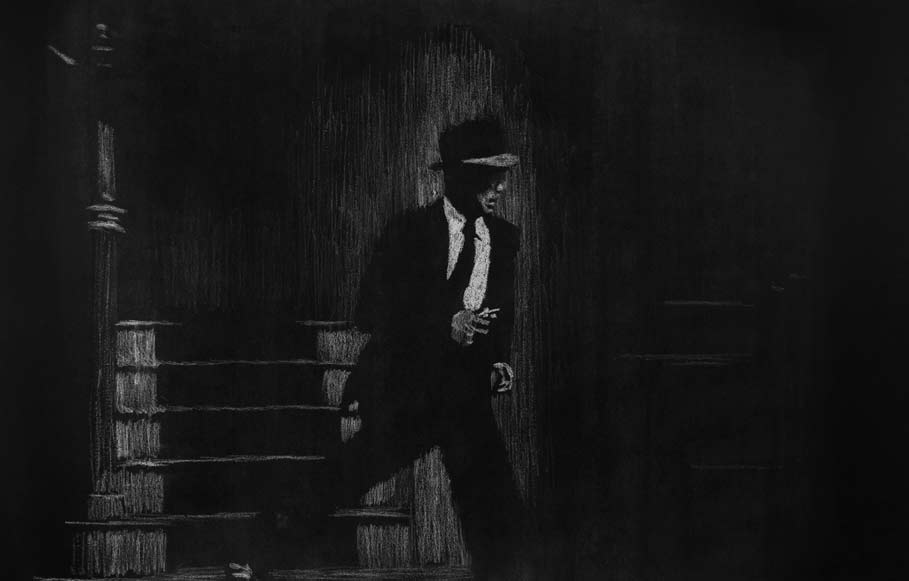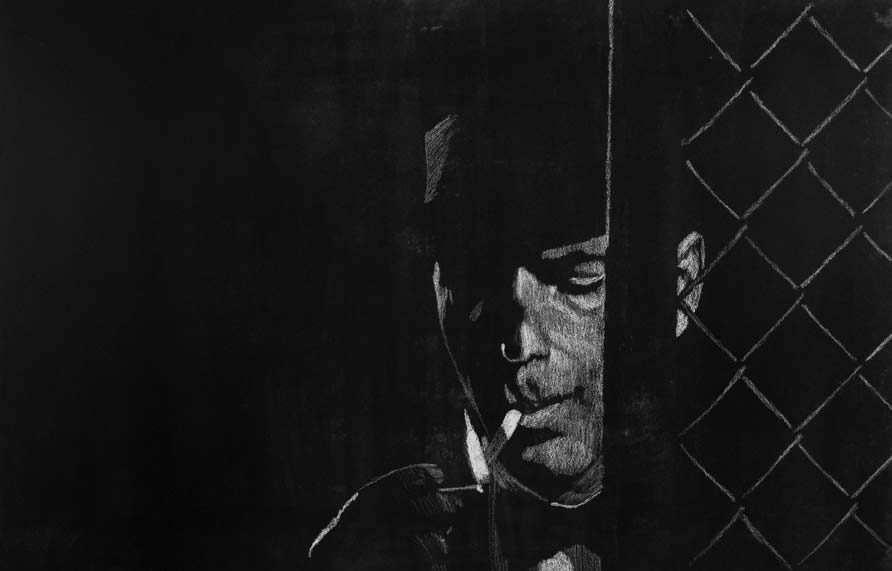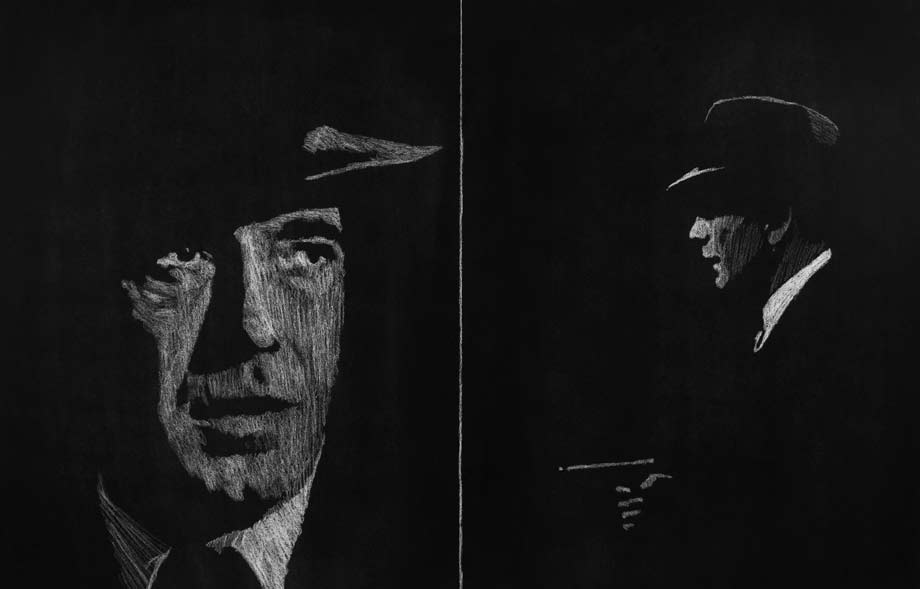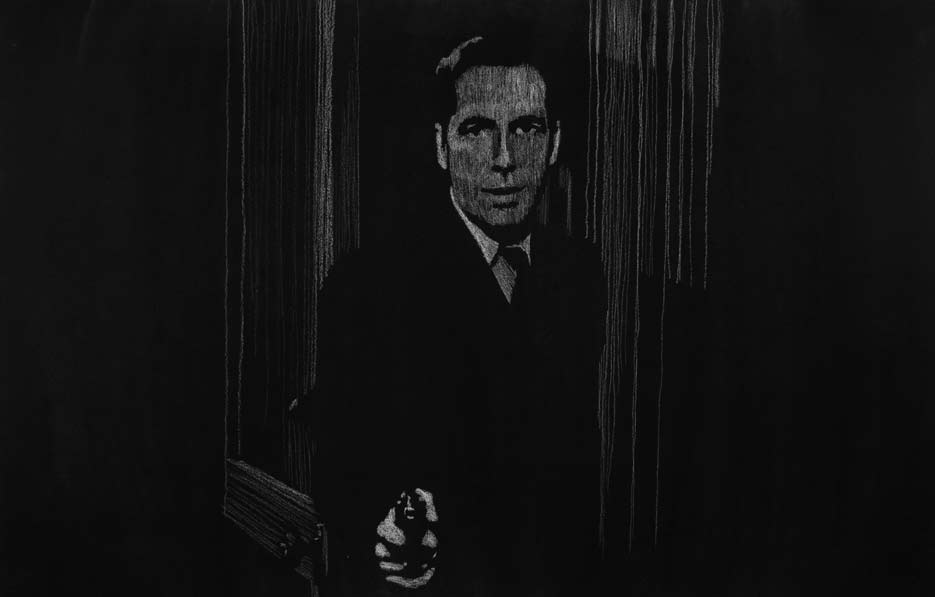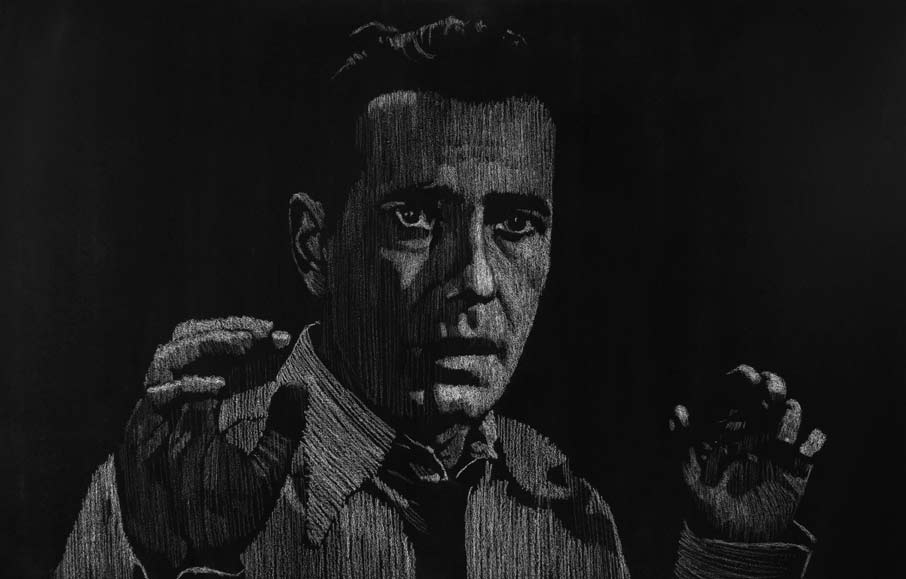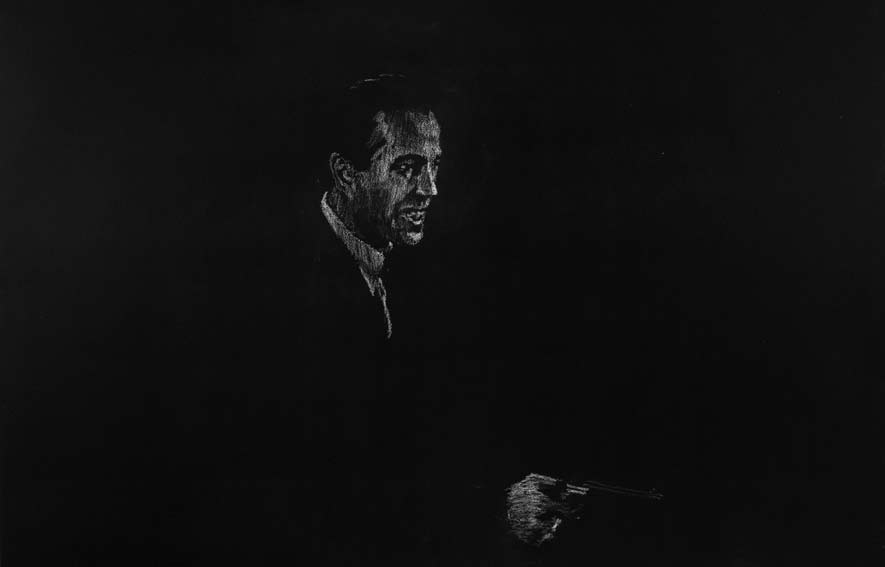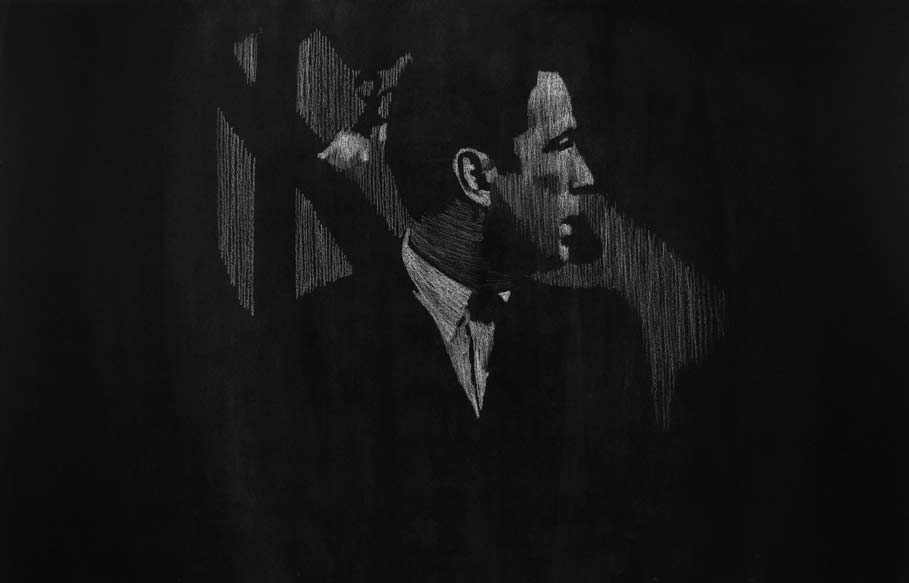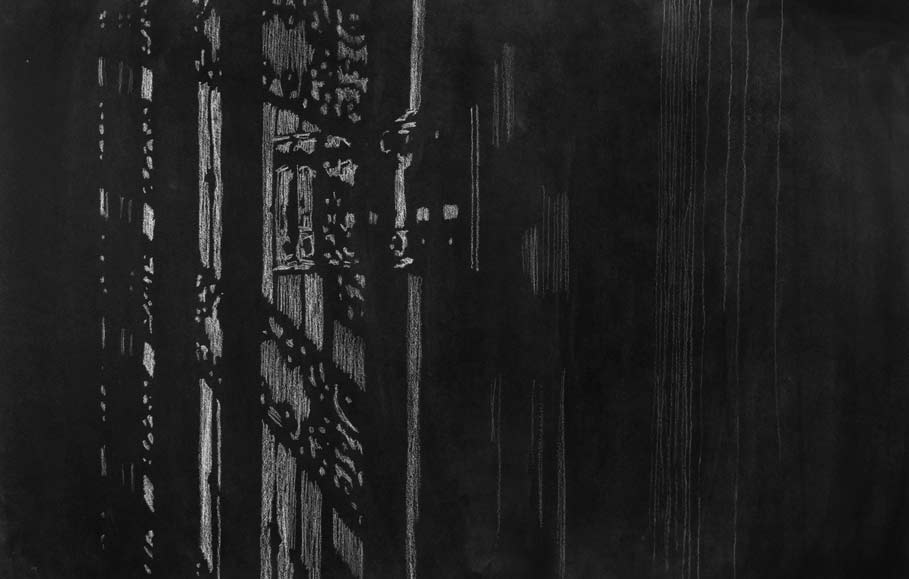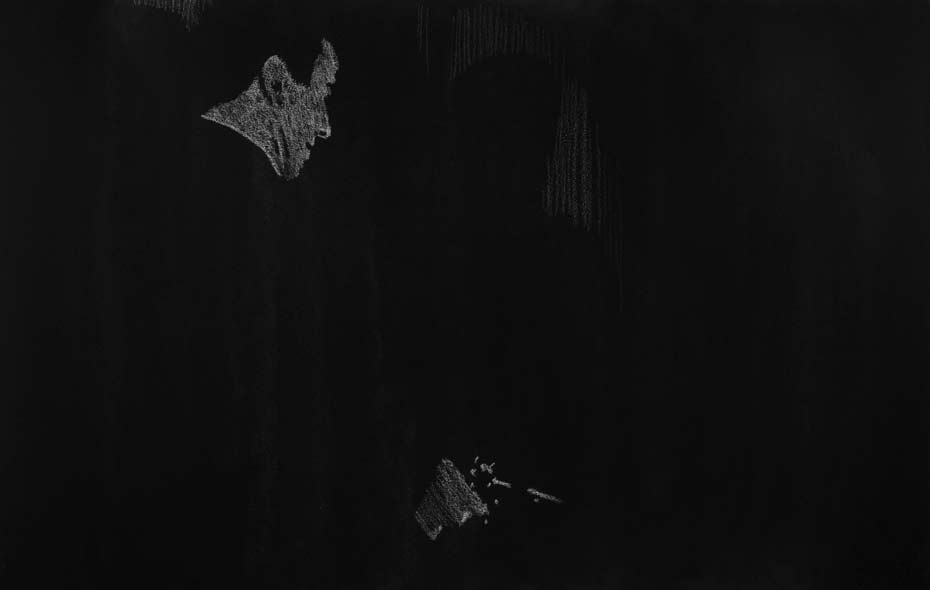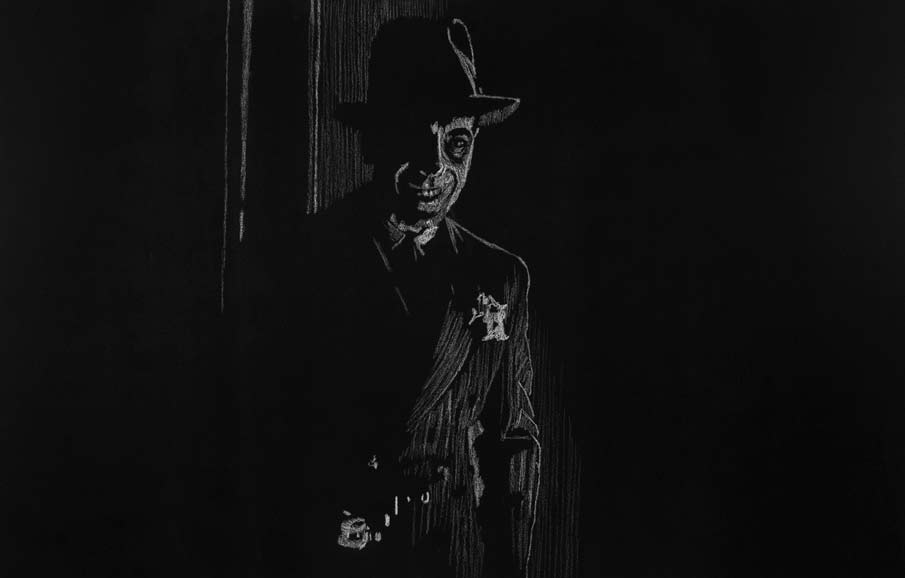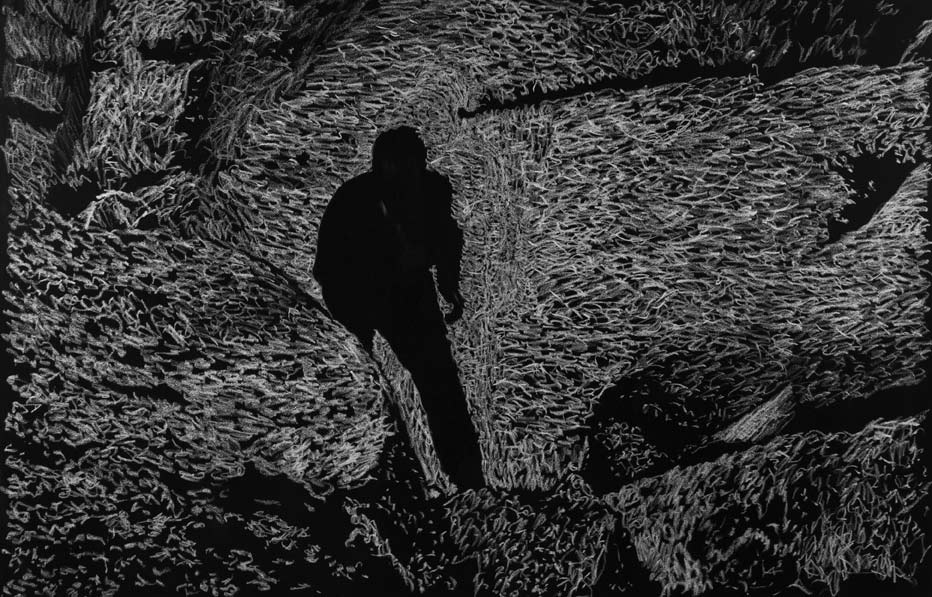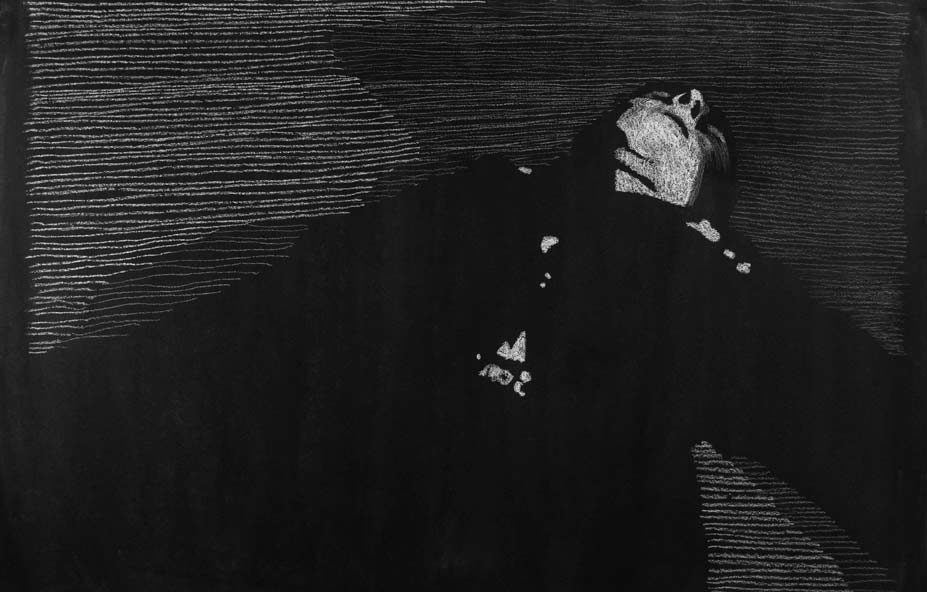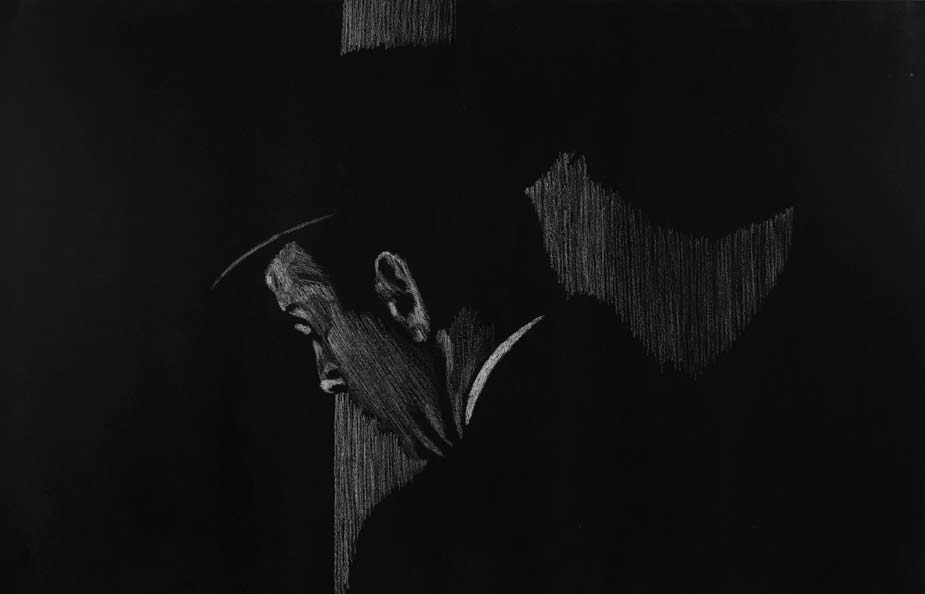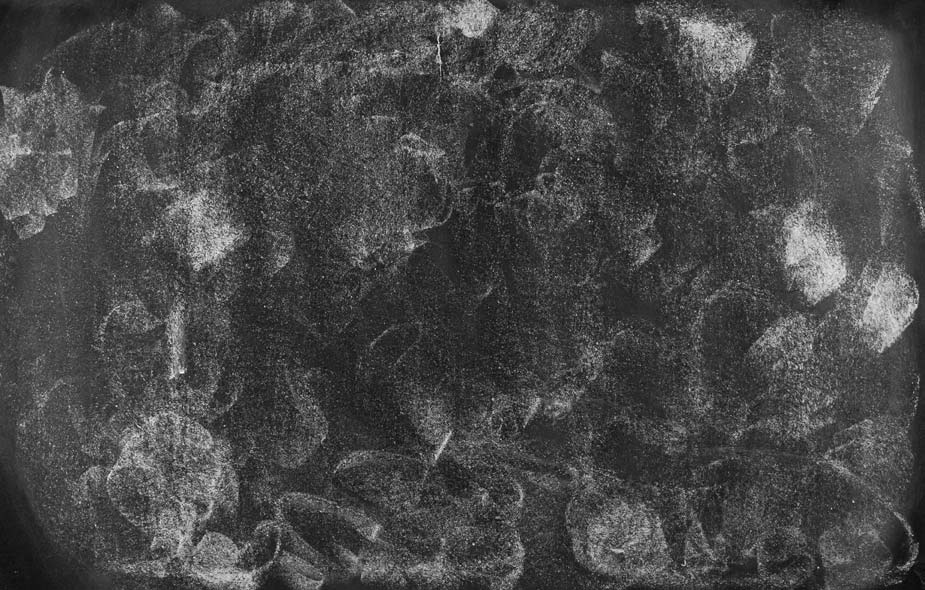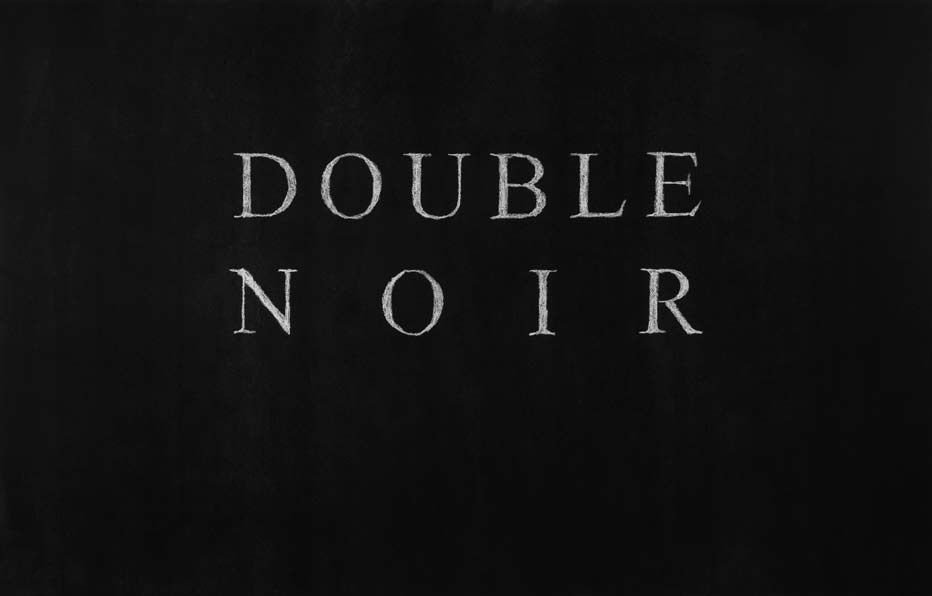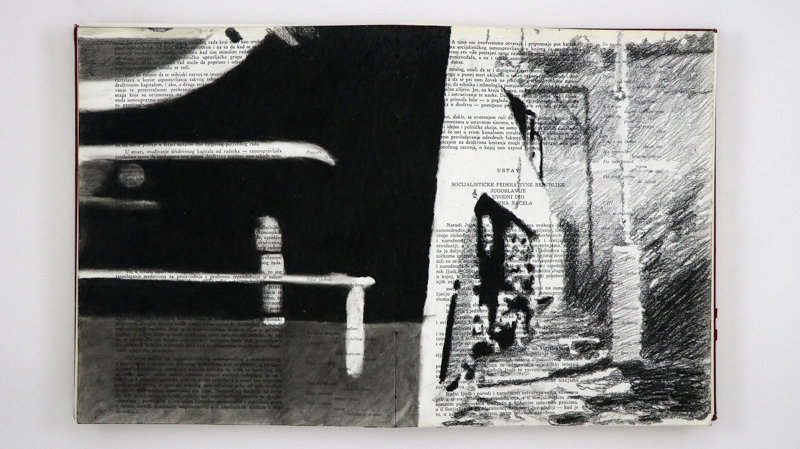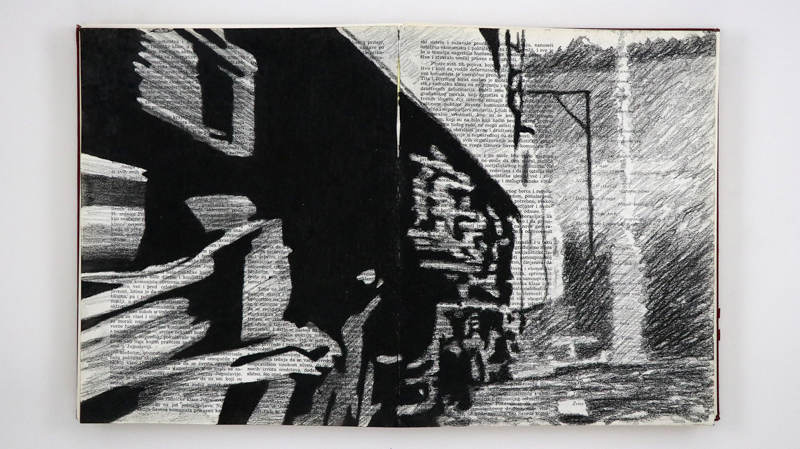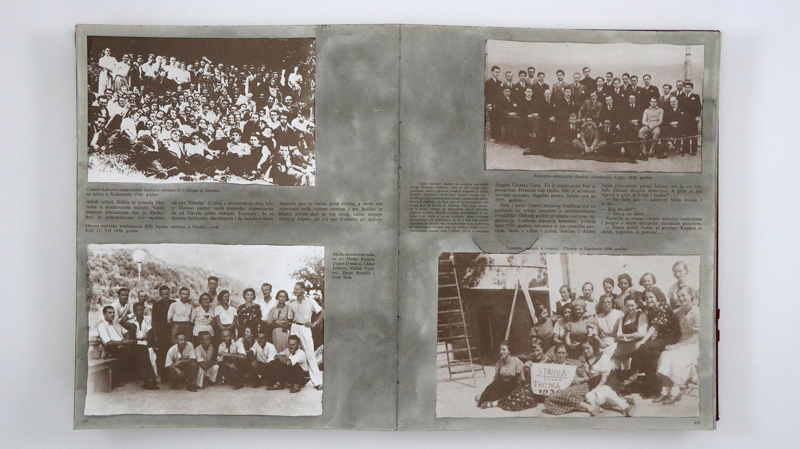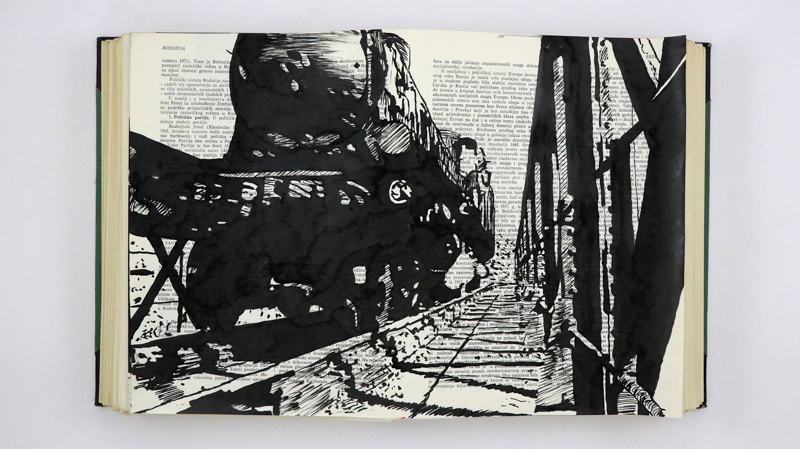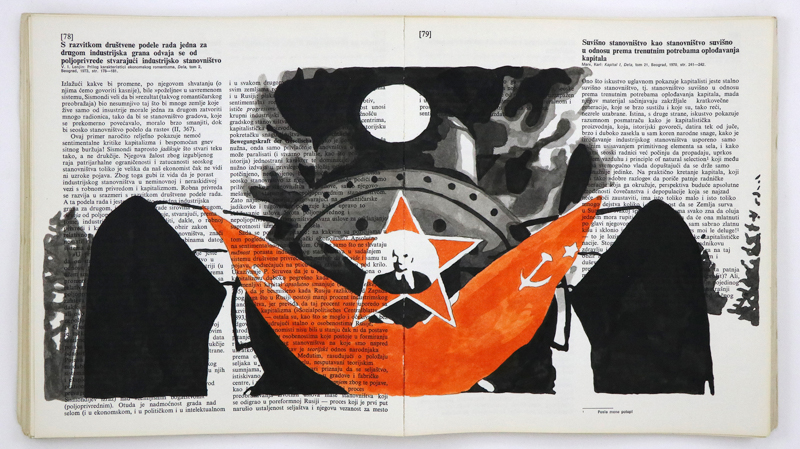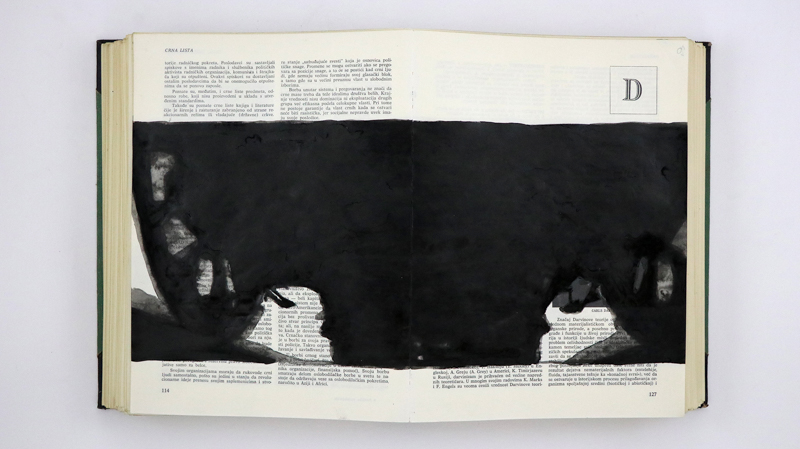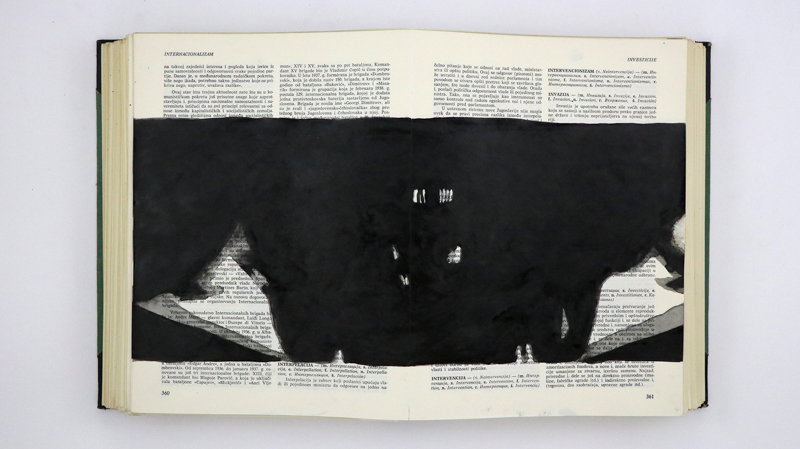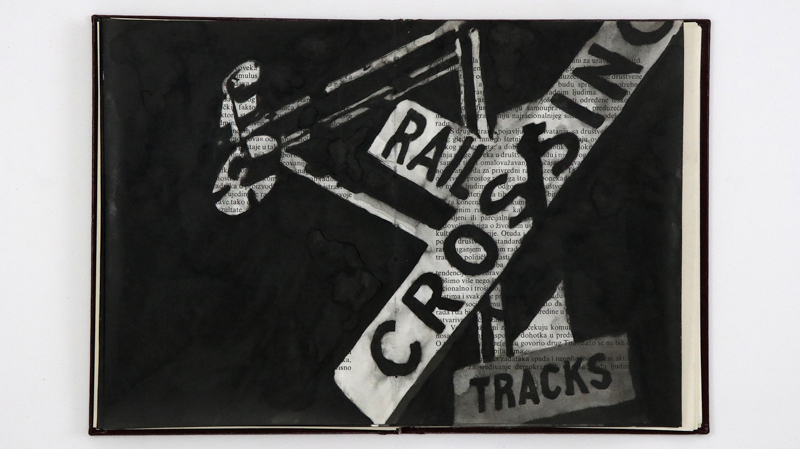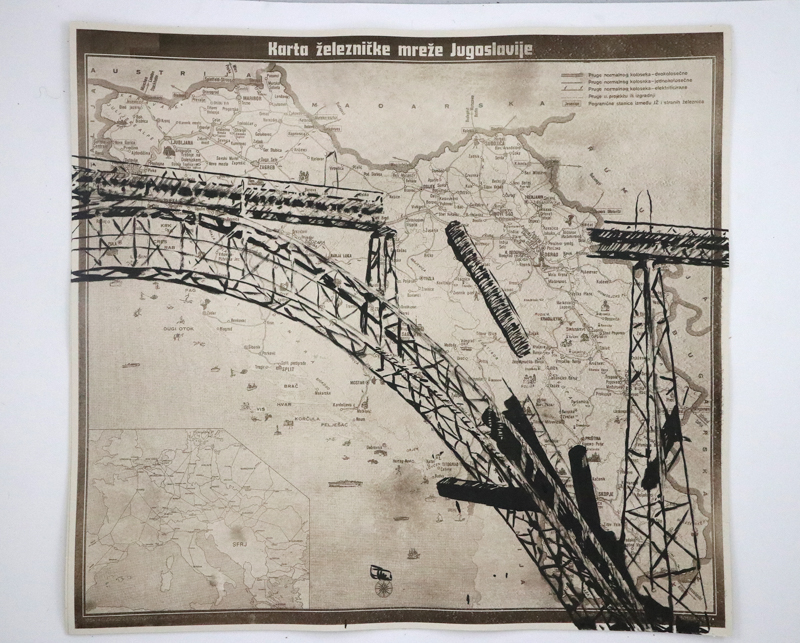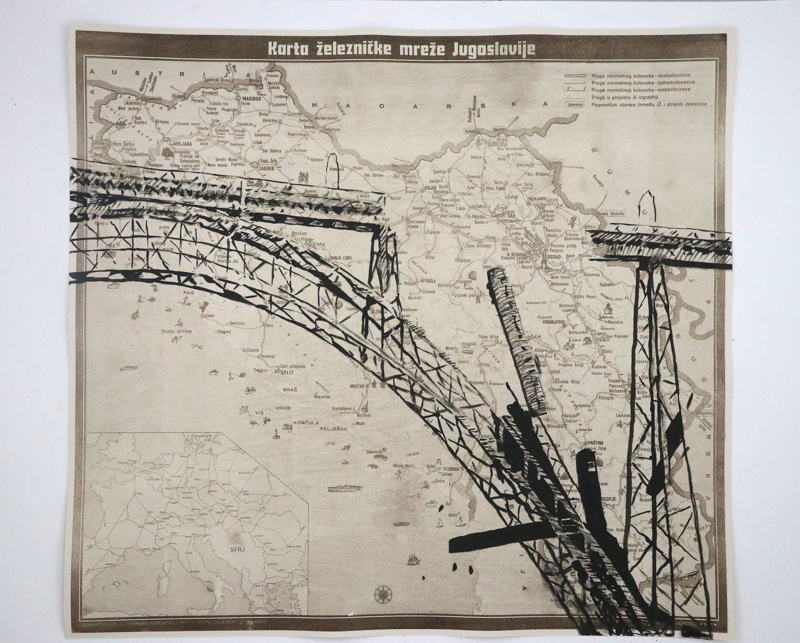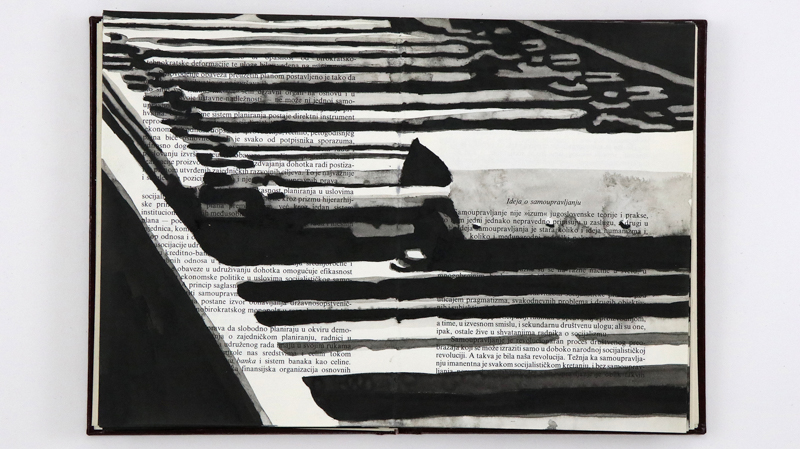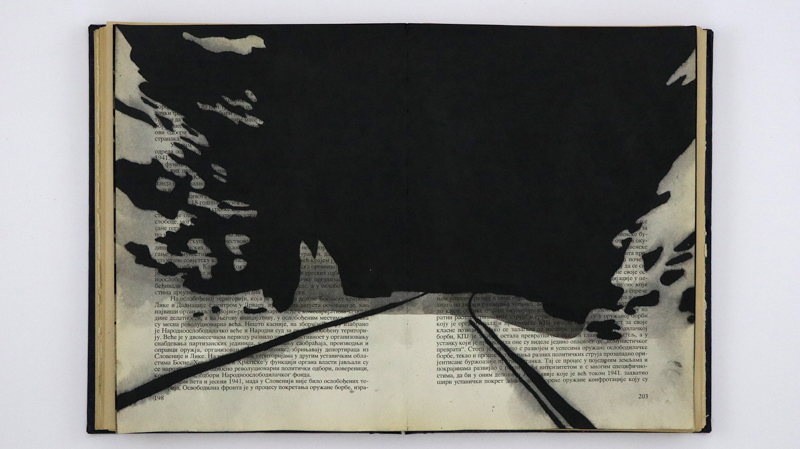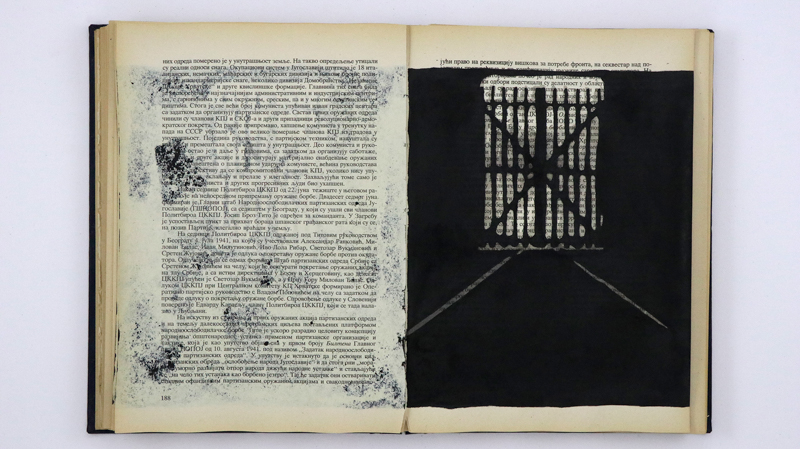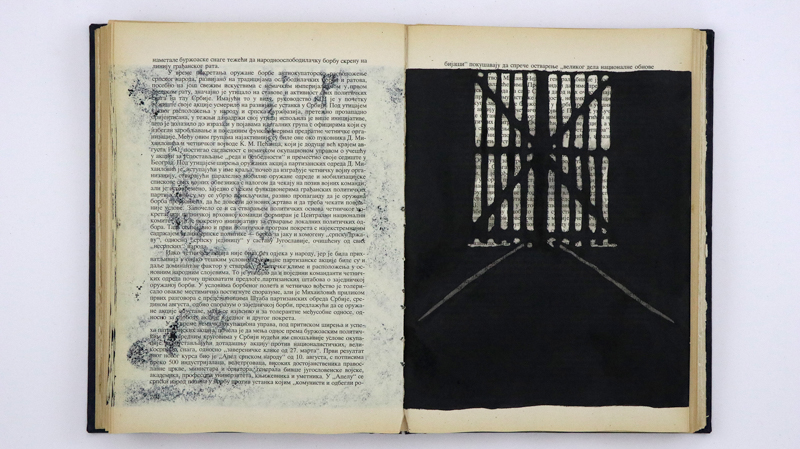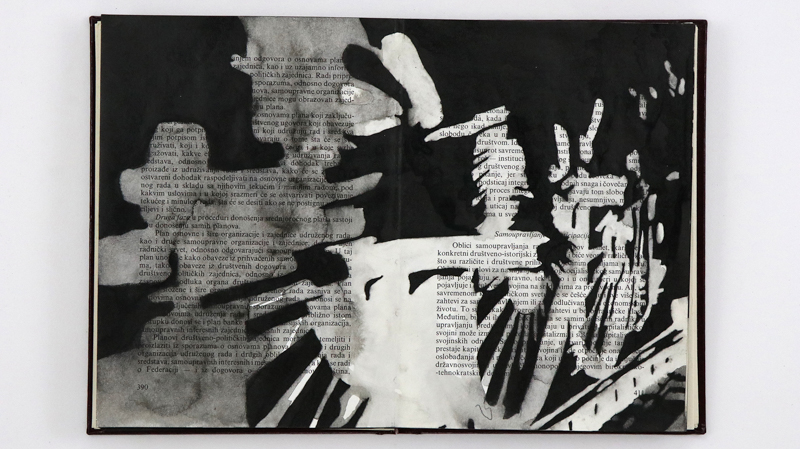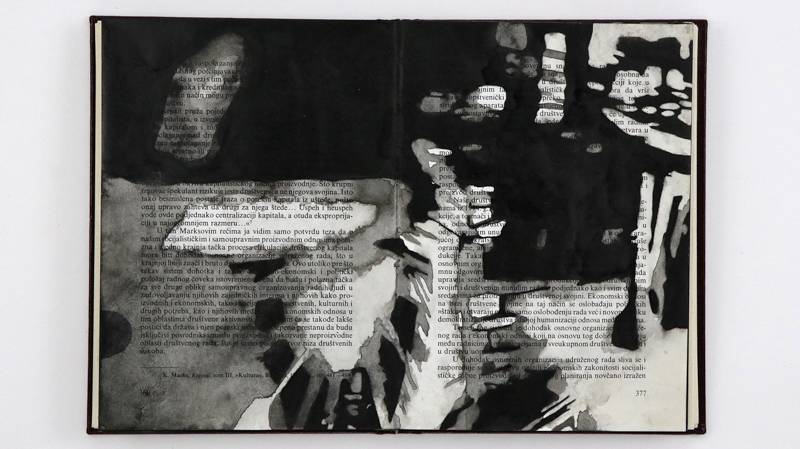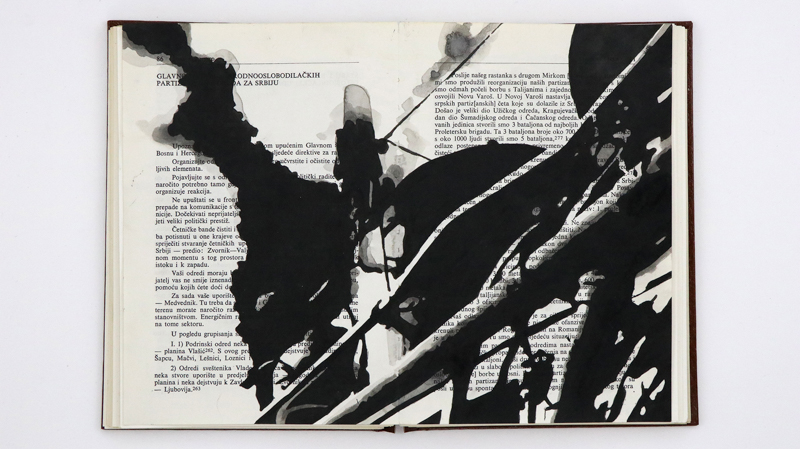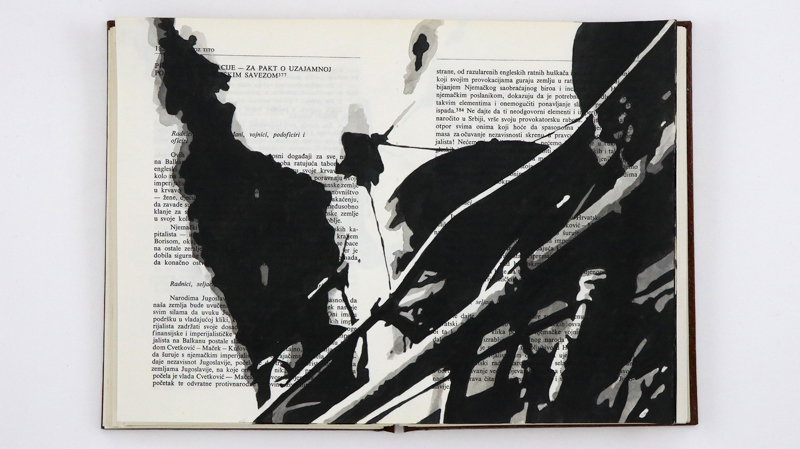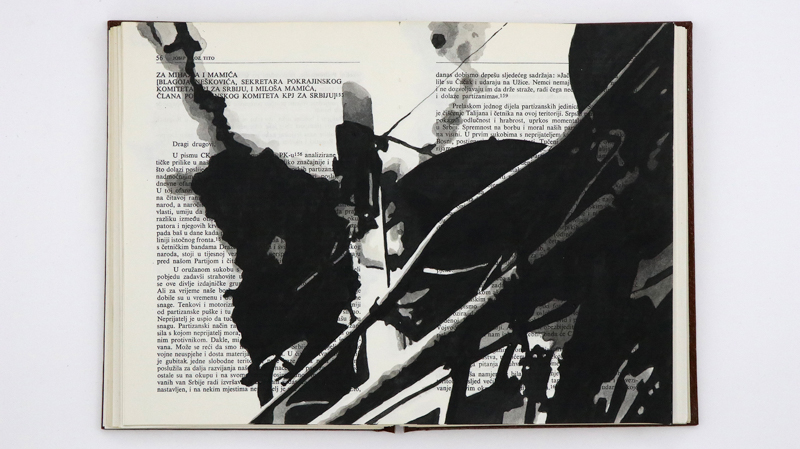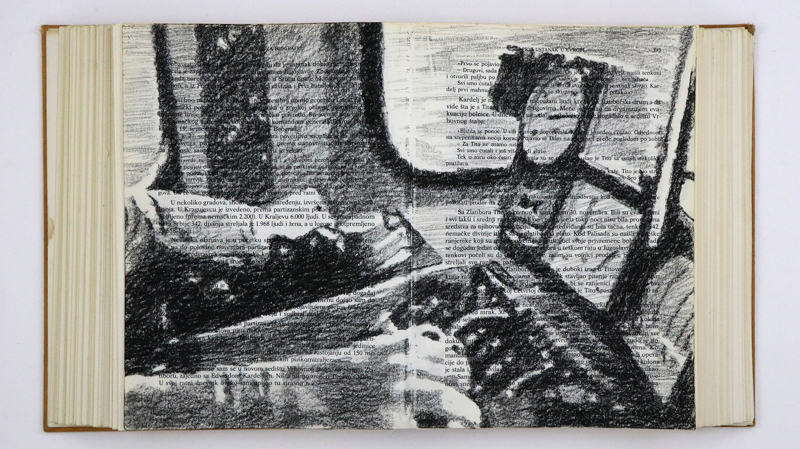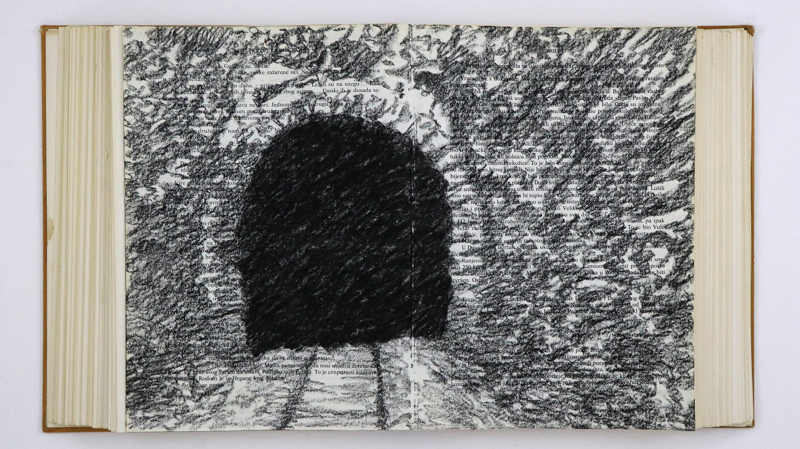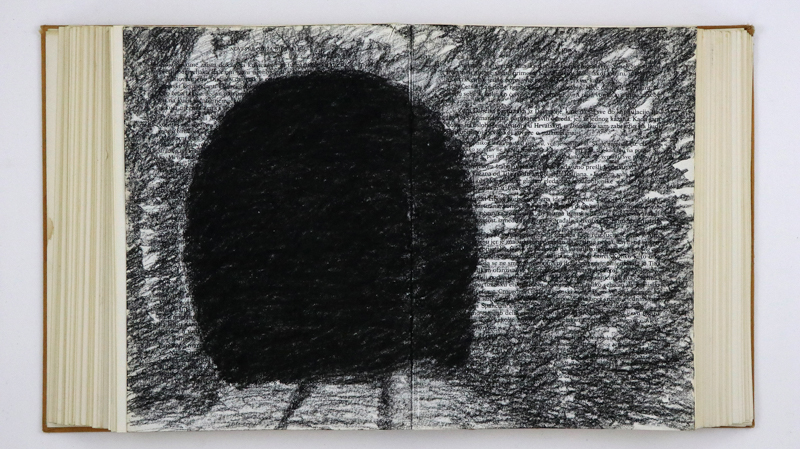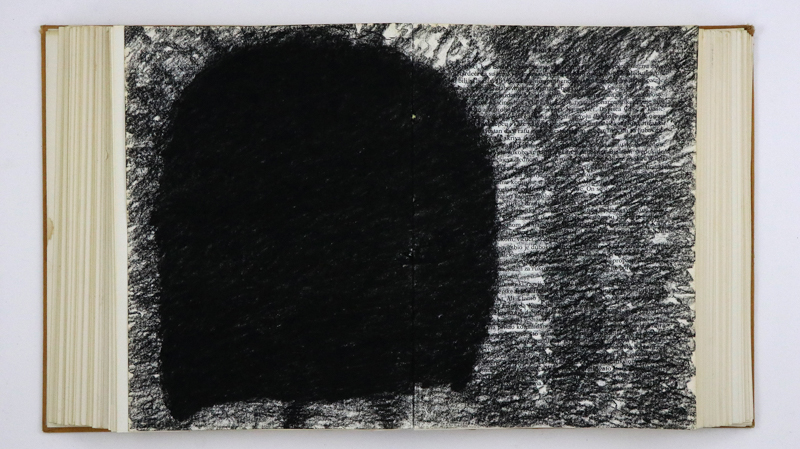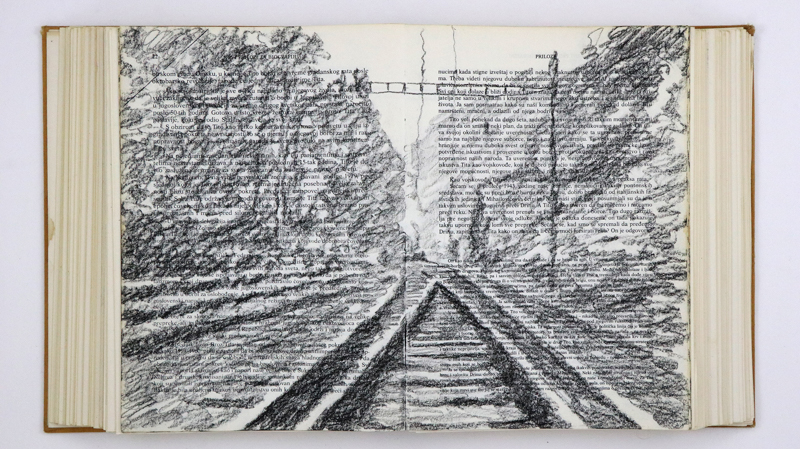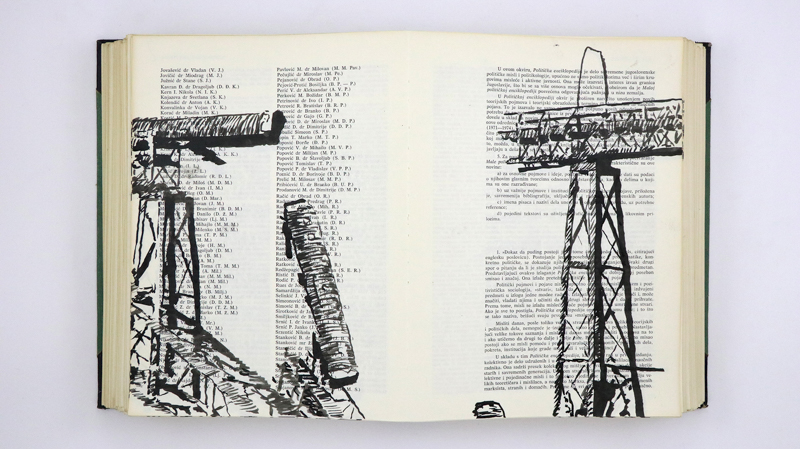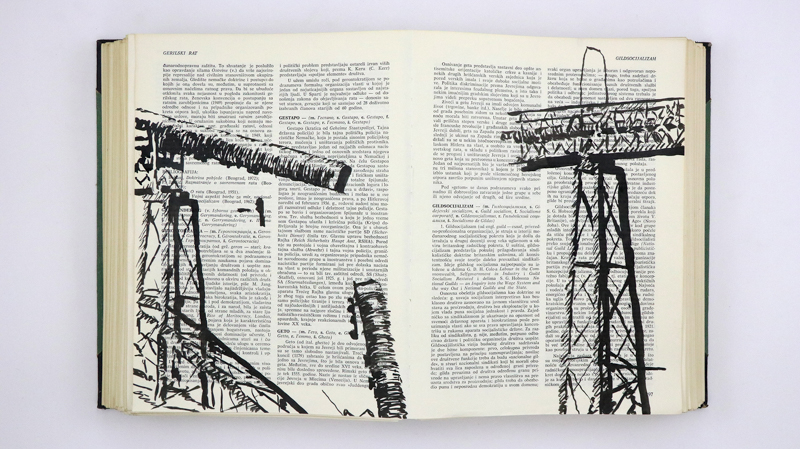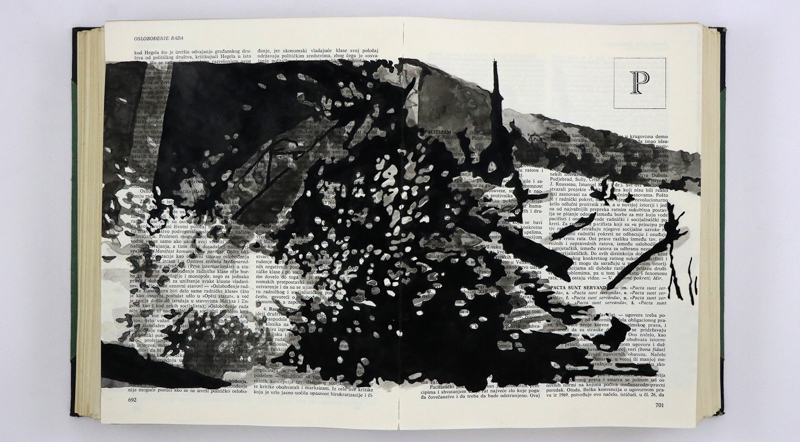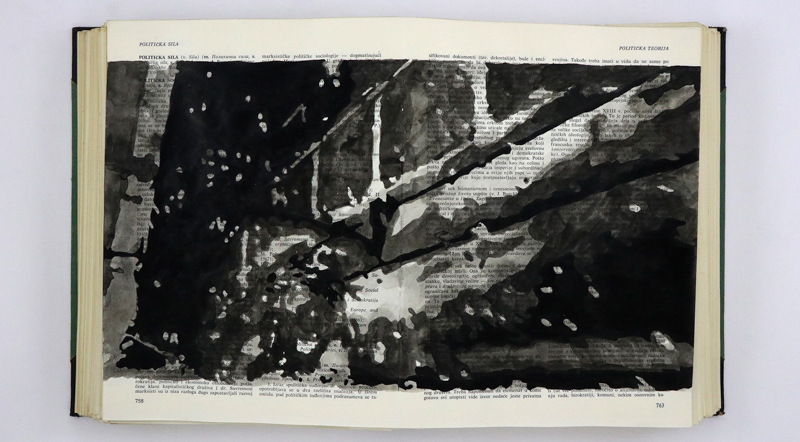
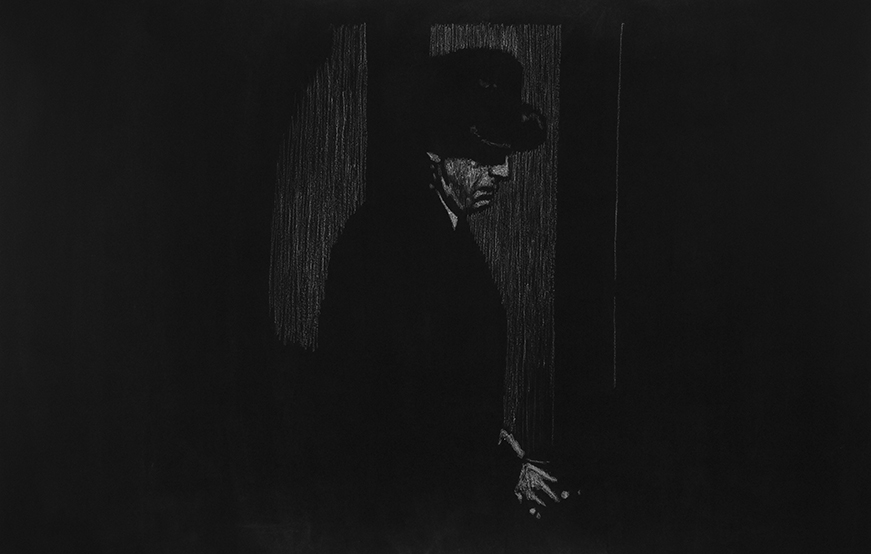

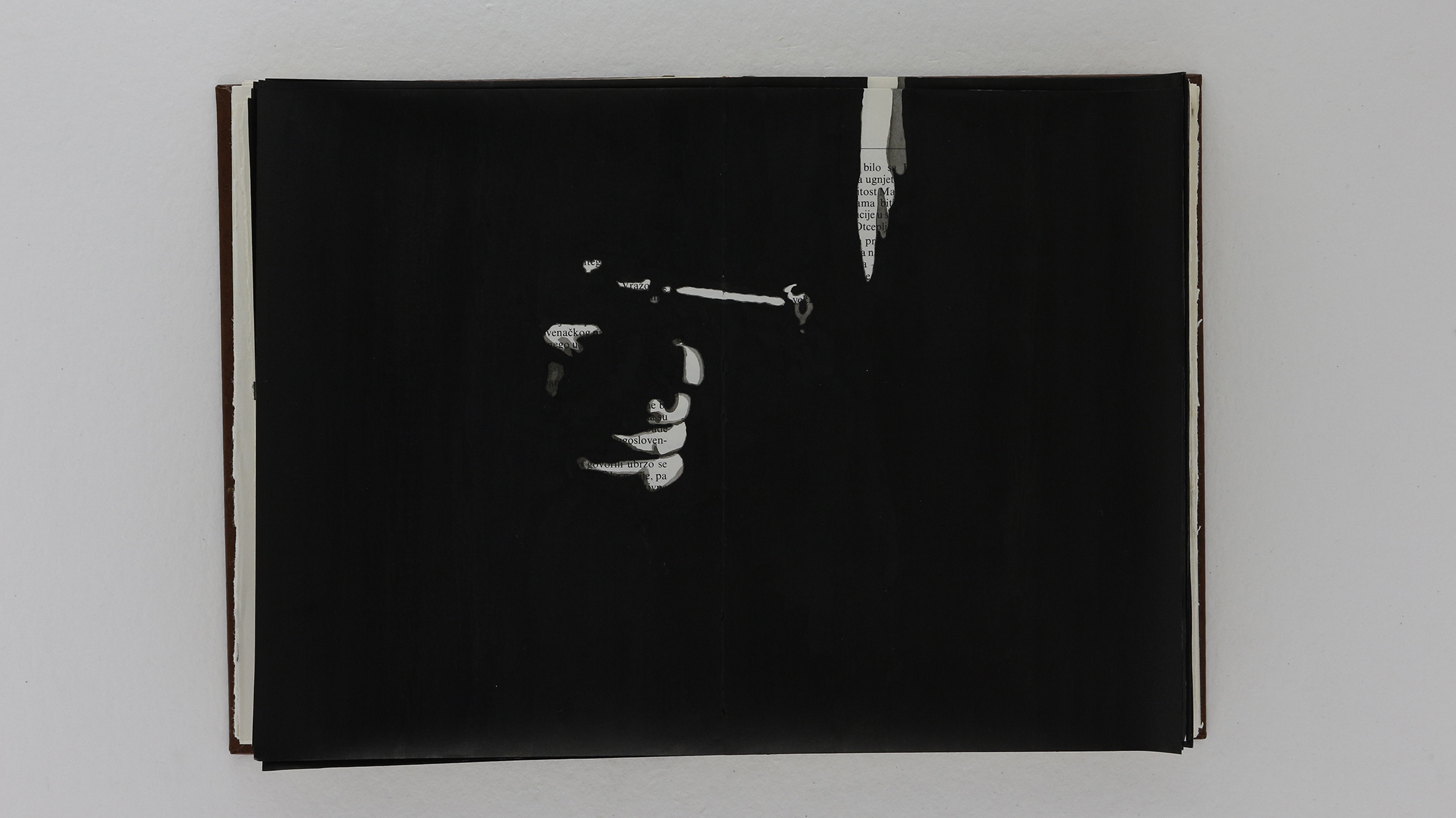









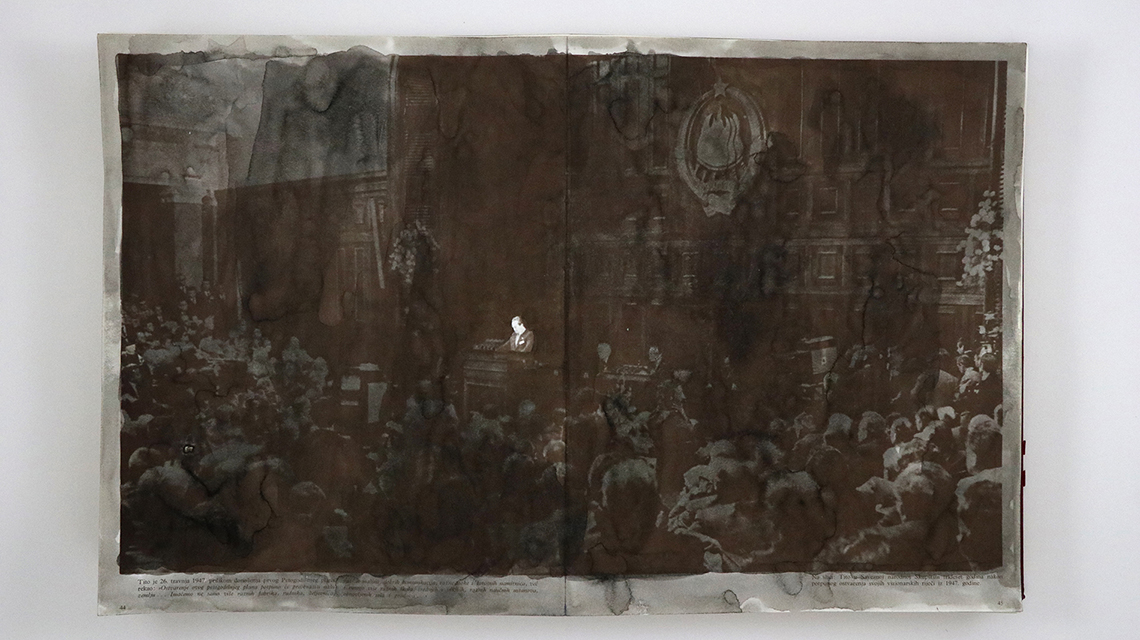
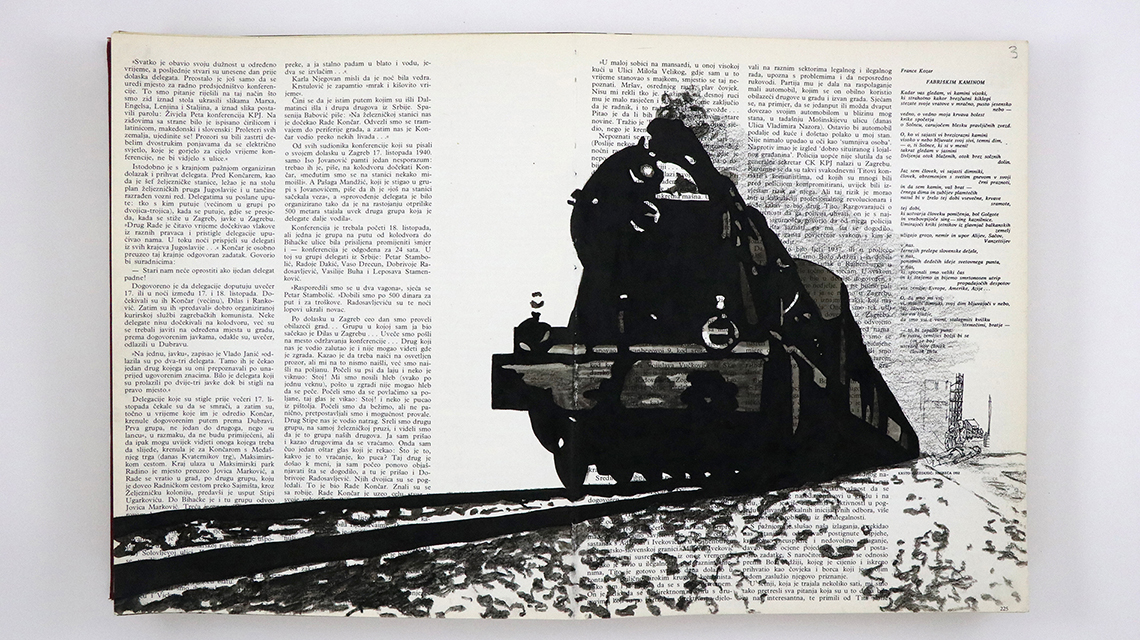




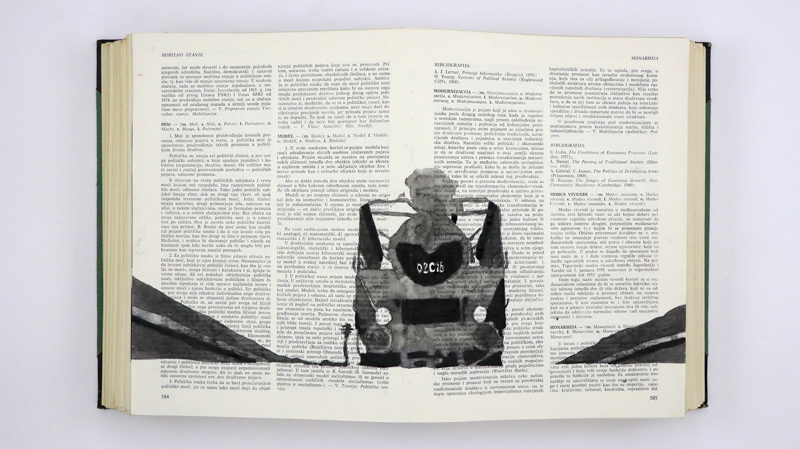

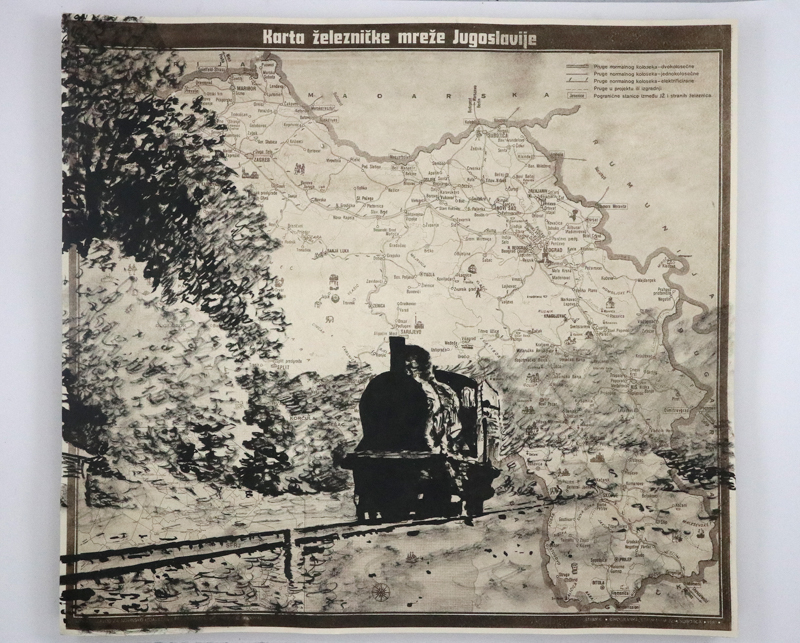


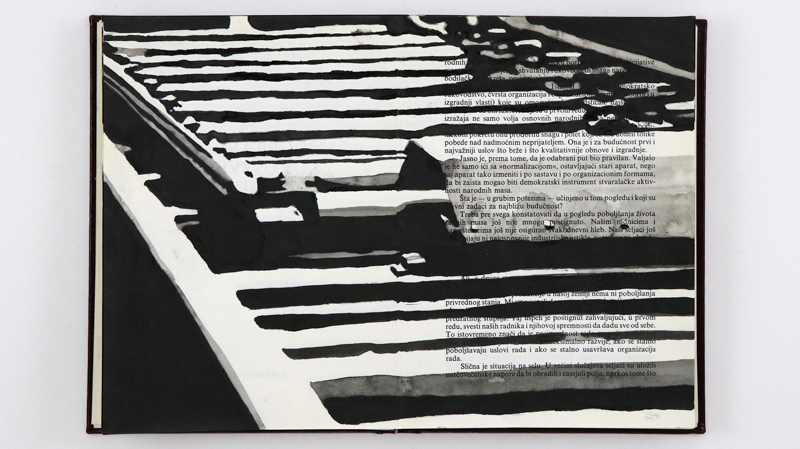


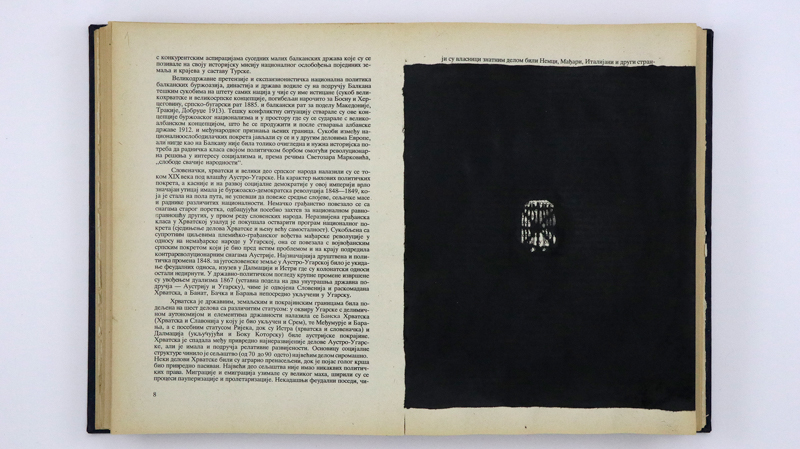


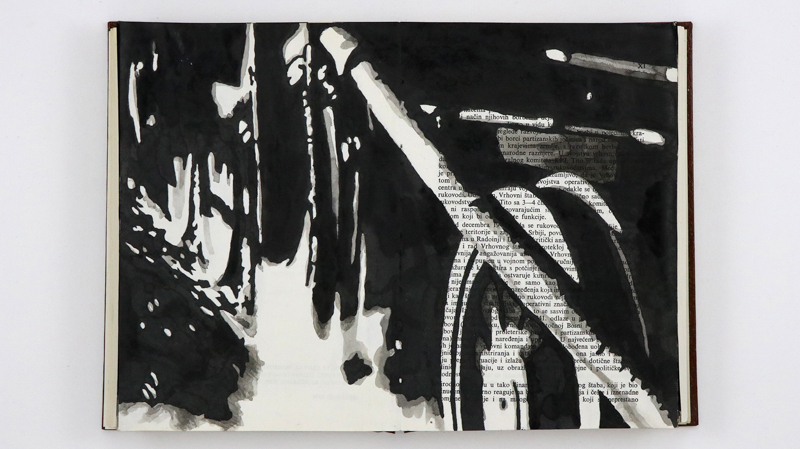
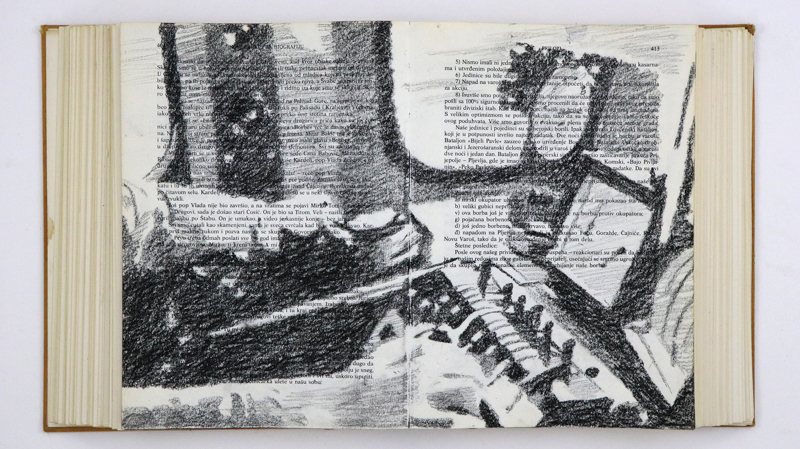


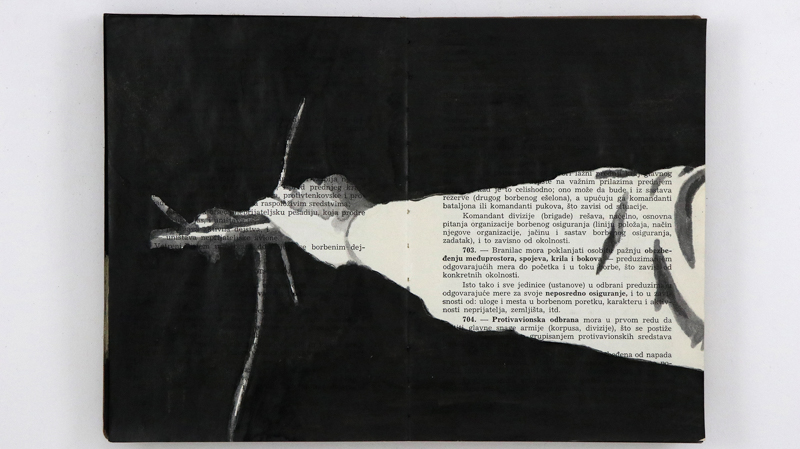
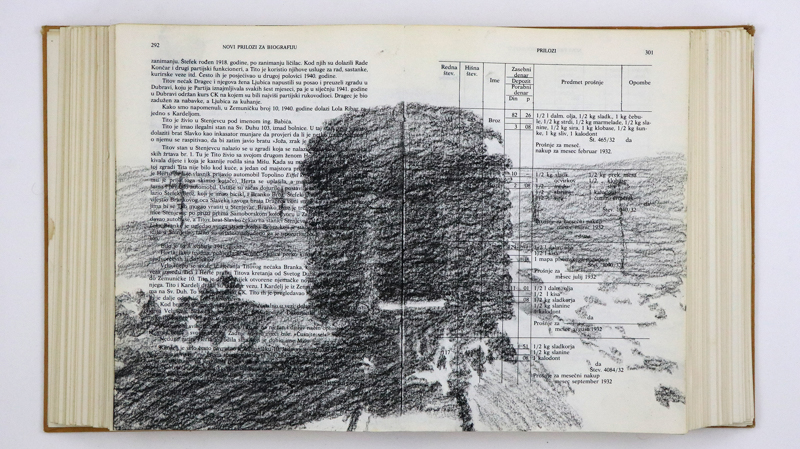


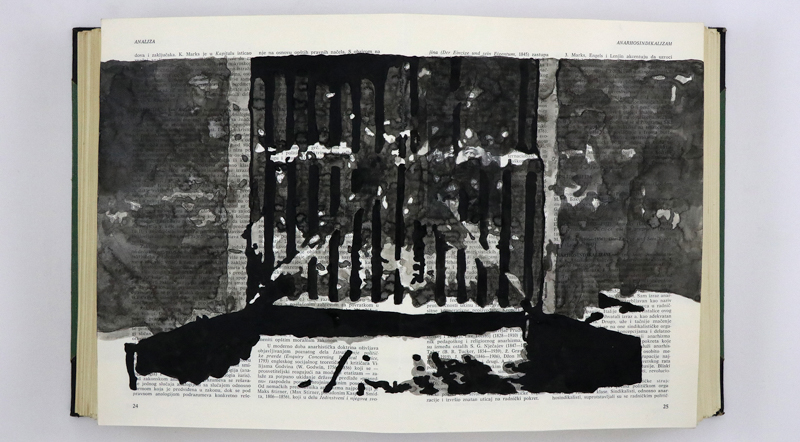

Press release
For his second solo show at Galerie Dix9 in Paris, Nemanja Nikolic presents his two latest video animations, made of drawings and using a substantially distinct technique derived from the same conceptual approach as moving images. The Serbian artist has tirelessly pursued this work since his masterful and highly acclaimed project Panic Book.
Trained in painting, Nemanja Nikolic excels in drawing and has earned many prizes. Since his early works, he has focused on exploring the expressive potential of classical drawing, and has rapidly developed his search for more complex patterns of the moving image, a conceptual approach that seems almost natural when one knows the artist?s fascination with the seventh art and the specificities of his artistic approach. He thus gave to the traditional expression of drawing a more complex visual dimension, linking the language of visual art and film. Animation quickly became his new form of visual expression, often referring to Hitchcock films, both for their form and their theme (like Panic Book). The artist particularly retains the gradual construction method (image by image), the tension and psychological uncertainty as a narrative structure.
A tribute to film noir, Double Noir (2016) is a video made of sixty sequences showing a man in pursuit of his own double. With its protagonist Humphrey Bogart, the scenes are inspired by nineteen films played by this iconic figure of film noir. Each sequence is made of white chalk drawings on a large blackboard, but only the last drawing of each sequence remains on the board. Thereby, the only memory of the 1800 drawings required for the animation is the video itself. Presented for the first time at the 56th October Salon in Belgrade, Double Noir figures in important collections including the Lucas Museum of Narrative Art in Los Angeles.
Uncontained images (2018), is an installation composed of five videos, produced for the 57th October Salon in Belgrade. The sequences are made from drawings with ink and charcoal on book pages and maps. As with Panic Book, the books date from the Tito era and deal with the ideology of self-managing socialism. The questioning of the movement of the image is here focused on unique and short sequences (except the sequence of the train) whose images are inspired by different films made during the Cold War.
The Gun is inspired by a scene taken from the noir classic The Big Combo (1955), which shows a close-up of a hand pulling a pistol from a jacket. At the moment the gun turns, pointing to a fictional spectator, it goes back into the pocket. The sequence is drawn on book pages from Social Criticism by the famous ideologist Edward Kardelj.
The Train video has a more complex composition and montage. The 28 sequences feature the train in motion, shot from different angles, in different frames, with different camera positions. They are inspired by films such as From Russia With Love (1963), The Train (1964), The French Connection (1971), or Runaway Train (1985). They are drawn on book pages that are directly related to the biography of Tito and books that influenced the formation of his ideology, but also on some railroad maps of SFR Yugoslavia. A scene from Billion Dollar Brain (1967) shows a locomotive, with an effigy of Lenin on the front, that almost threateningly rushes forward. This was seen by the artist as an almost comic-like illustration of the socialist ideology: the train rushes, falls and passes the obstacles it encounters. Unlike previous videos with a linear structure (beginning, peak and the end), the narrative in Uncontained Images is hidden, the potential plot is left to the free interpretation of the viewer and arises from an interaction between the segments of the video installation itself.
Through his analysis of the movement of images and its temporal logic, Nemanja Nikolic questions, in these works, the nature of the narrative and symbolic potentials of the image of the film. Just as Double Noir seems to have an endless story, since the last scene joins the first scene, erasing while giving life to the plot, so the sequences of Uncontained Images come alive in an infinite loop and can interact with each other, giving the spectator free choice to draw a plot, as noted in the title of the exhibition: «A sketch for one erasable plot».


